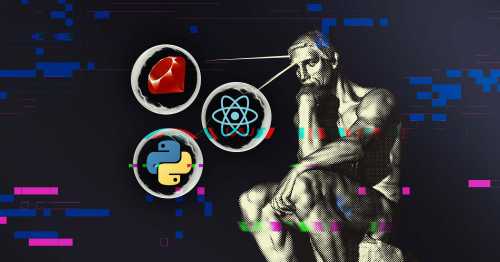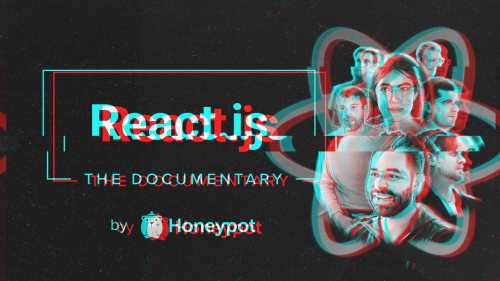Remember when you first saw a Hollywood-imagined IRL developer, furiously typing lines of code while ominous music played in the background? Little did you know that one day you'd become a fullstack developer yourself, well, maybe minus the dramatic musical background?
If you’re already here, you're probably sitting in your coffee-smelling workroom pointlessly trying to decipher the enigmatic world of frameworks and libraries.
Let’s cut to the chase. The best way to become a fullstack code wizard is by learning the best frameworks for fullstack developers and then figuring out the best fit for you. Buckle up, we're going to dive headfirst into a world filled with headache-inducing glitches and technological wonders.
Frameworks vs. Libraries
It's essential to understand the distinction between frameworks and libraries, as they serve different purposes and have unique structures. A framework is a cohesive and reusable structure of code that simplifies the process of software development by providing a foundation upon which developers can build their applications. In this article, we'll mention many frameworks, such as Laravel, Django, or Ruby on Rails.
On the other hand, a library is a collection of pre-written, reusable functions, classes, or modules that can be easily incorporated into someone’s code to perform specific tasks or add functionalities. While frameworks dictate the structure of an application, libraries offer a more modular approach, allowing developers to pick the components they need without affecting the application's architecture.
Each framework has its positive and negative aspects, so it’s essential to pick one that is right for your project.

The Top Frameworks in 2023
The tech world offers plenty of frameworks to navigate this process, each having its own unique set of features and benefits, designed to cater to different needs and preferences.
Here is a list of the best frameworks for fullstack development:
1. Node.js
Node.js is a server-side JavaScript runtime environment that enables the use of JavaScript for backend development. Express.js, is a popular backend framework that can be used with Node.js to establish the MEAN stack, which is perfect for developing web applications.
Benefits: It has a gigantic community of active developers, a rich set of features, libraries, and all-around good performance and growth potential. Node.js can be used together with React.js to create growth-oriented, resilient, and effective web applications, as it is highly scalable. This framework is compact, lightweight, and effective. It has a built-in package manager, which reduces the lines of code needed.
When to choose it: If you're looking for a framework that combines potency with user-friendliness. It’s used for web applications that are demanding in nature, such as video streaming websites and real-time applications. Knowing your way around JavaScript is a must to use this framework.
Related content for your soul and skill:
2. React
Did you know we recently dropped a long-form documentary about React? I suggest you go watch it ASAP if you'd like to know about its origins.
React is a frontend JavaScript library used to build user interfaces. It’s a popular choice for fullstack developers, as it can be used on both frontend and backend web applications. It’s employed for managing the presentation layer of web applications.
Benefits: Its greatest advantage is the use of virtual DOM. React is fast and can increase performance greatly. React is also used to make up reusable UI structures, which is a huge advantage, as they reduce the time needed to code from scratch. This saves considerable effort and resources. Code readability is ensured by the components model of this framework, making it accessible for extensive apps to be developed and coded.
When to choose it: Being capable of using JavaScript and CSS is vital to work with this framework, although it’s one of the simplest programming languages to learn. If you're looking for one that combines power and user-friendliness, then React is one of the most outstanding options for you.
3. Laravel
Laravel is an open-source PHP web application framework that is used for building scalable and secure web applications. This framework eases everyday tasks used in the majority of web projects (authentication, routing, sessions, and caching), without sacrificing the application's functionality.
Benefits: When designing a web application, Laravel will make it more expandable and adaptable. You also save a lot of time since Laravel uses components from other frameworks multiple times in a way that helps to organise and manage resources. It also has a comprehensive range of features that can boost the speed of web development. Your webpage will also be safe as Laravel has mechanisms that prevent a significant number of web attacks.
When to choose it: If you’re building a website from scratch and are comfortable with Core PHP and Advanced PHP, this framework will simplify your task.
4. AngularJS
Angular is a frontend JavaScript framework used for building dynamic web applications. It's an open-source framework that was developed by Google, which helps programmers build single-page web applications.
Benefits: It offers numerous features that help the app progress faster and easier. Angular can work in conjunction with backend servers to create a fullstack application. With Angular, the development of the front and back end can be done at the same time, and it also uses reusable components that enhance maintainability. Angular runs on the web, and since it’s a JavaScript framework it also has astounding tooling for any issue and an easy onboarding process.
When to choose it: When in need of solving issues faced in single-page applications. Angular is an excellent choice for big, complex projects because it’s feature-rich.
5. Django
Django is a Python web framework that is used for building web applications quickly and efficiently. It includes a series of features that are now fundamental for web development training.
Benefits: Django is exceptionally flexible and expandable. The most important feature is the reusability of its mechanisms and systems. It tends to use fewer code sentences, resulting in low coupling and fast development. Django is also made of a lightweight web server, suitable for tryouts and progress monitoring.
When to choose it: It’s one of the best frameworks for fullstack web development. It works perfectly for projects that need to handle significant scaled content or deal with advanced technological functions. Although it works amazingly well for complicated tasks, it’s easy to use and can be of great help for smaller projects that need to grow.
6. Express
Express is a robust Node.js web application framework that is used for building dynamic web applications and providing robust features. It is used for building single-page, multipage, and hybrid web applications. It’s a layer built on top of Node.js that helps server management.
Benefits: It can build applications in a simple, efficient, and quick way with the use of JavaScript, hence reducing coding time almost by half.
When to choose it: If you want to build a single page, multipage, and hybrid web application (or even a mobile app). If you already know JavaScript this framework will be very easy to use.
7. Ruby on Rails
Ruby on Rails is a backend framework, based on the language Ruby. It’s a popular web application framework that is used for building quickly and efficiently. Ruby allows easy migration and database tablet creation, facilitating faster application development.
Benefits: Ruby on Rails offers a full library of open-source code, meaning that developers and programmers can easily find code fragments that can improve the performance of their projects. It’s also a reliable platform for users because it is constantly being updated.
When to choose it: Whether you’re working on a small or large-scale project, this framework allows you to quickly model and construct web applications with little configuration. It’s great for building scalable websites and applications.
8. Flask
Flask is a lightweight Python web framework that is used for building small and medium-sized web applications. This framework allows developers to maintain the application logic apart from the presentation layer, leading to cleaner and more maintainable code.
Benefits: Flask doesn’t need special tools or libraries to function. It’s simple and effective to begin with because it has a debugging and built-in development server.
When to choose it: If you’re looking for an extensible and lightweight fullstack framework.
So, in conclusion
That’s all, folks. Our whirlwind tour of the best frameworks for fullstack developers in 2023 has come to an end. Armed with these top-notch frameworks and libraries you’ll be paving the road towards coding greatness. So, go forth and conquer the coding realm!
And while you're at it, subscribe to the .cult newsletter for more tips, tricks, and trend updates on web development. After all, in this ever-evolving world of tech, you never know what jaw-dropping innovation awaits just around the corner!


